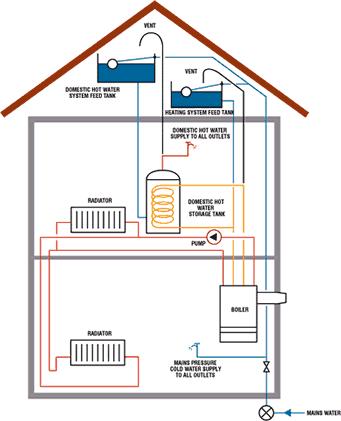I'm after a little advice please.
I have a simple heating system in my house which has a back-boiler, pump and timer. Both the hot water and central heating are vented (2 header tanks in loft) and it is a dual pipe system (flow and return). There are 11 radiators throughout the house and a hot water cylinder in the airing cupboard.
My problem is that no matter how much time I spend balancing the system it's impossible to get a decent amount of heat out of all of the radiators.
Hot water supply is good and the temperature is very high.
Please can somebody tell me how the hot water cylinder is connected to the system? I can't easily tell because all of the pipework is under the floor boards. Is it simply connected across the flow and return like a radiator? If so could this be the reason that I can't balance the system out properly? There is what looks like a thermostatic valve connected in line with the pipework to the coil in the cylinder but it's seen better days and is pretty good and seized.
Also as a second question does anybody know when speeds 1 and 3 would be used on the central heating pump? Mine is set on 2 just like everybody else's I've ever know?
Any advise would be greatly received.
I have a simple heating system in my house which has a back-boiler, pump and timer. Both the hot water and central heating are vented (2 header tanks in loft) and it is a dual pipe system (flow and return). There are 11 radiators throughout the house and a hot water cylinder in the airing cupboard.
My problem is that no matter how much time I spend balancing the system it's impossible to get a decent amount of heat out of all of the radiators.
Hot water supply is good and the temperature is very high.
Please can somebody tell me how the hot water cylinder is connected to the system? I can't easily tell because all of the pipework is under the floor boards. Is it simply connected across the flow and return like a radiator? If so could this be the reason that I can't balance the system out properly? There is what looks like a thermostatic valve connected in line with the pipework to the coil in the cylinder but it's seen better days and is pretty good and seized.
Also as a second question does anybody know when speeds 1 and 3 would be used on the central heating pump? Mine is set on 2 just like everybody else's I've ever know?
Any advise would be greatly received.


